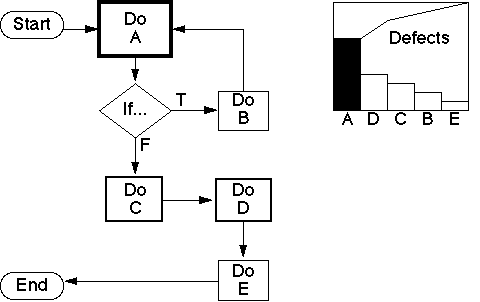Double Your Quality
QI Macros can help you create all of the charts and tools necessary to double your quality.
How often have your customers said: “It doesn’t work! It’s broken; fix it!” How often have you caught yourself saying: “There's too much crisis management, too many fire drills.”
It doesn’t have to be this way. Working with a computer operations group, we found ways to reduce online system downtime by 74% in just six months. With a wireless company we were able to reduce order errors from 17% down to 3% in just six months saving $3,000,000 per year in correction costs.
As you know, most companies have groups of people who’s sole purpose in life is to clean up the mistakes made in sales, marketing, ordering, fulfillment, application systems, billing, and payments. Solving these pressing business issues requires systematic analysis of the evidence that will lead you to root causes which can be corrected, often with minimal cost.
To double your quality, you will want to cut your defect rate in half. Six Sigma focuses on increasing productivity and profits by achieving very low levels of defects. The only way I know to do this is to use existing data to narrow your focus to the one or two activities that cause over half the defects. The Pareto chart can be a powerful tool for narrowing your focus. A typical process then begins to look like this:

The Pareto chart tells us to focus on activity A to optimize our results. Later, we can turn our focus to activities D and C, or we can initiate teams to work on C and D to maximize our benefit.
Tip: Narrow your focus, then choose the team. It's virtually impossible to choose the right team members to solve the problem before you've narrowed your focus. This is why so many teams get in trouble: teams form before they know what problem to solve. If you have one person from all five activities, they can never reach consensus on what to solve. If they do choose Activity A, then you no longer have the right people on the team to solve the problem.
Remember the 4-50 rule: 4% of the business creates over 50% of the defects. By narrowing your focus, you will maximize your benefits while minimizing your costs. You'll also minimize the number of people tied up in solving your key business problems. Everyone else can keep working to meet customer needs.
Set a BHAG - Big Hairy Audacious Goal. This might be a 50% reduction in defects in a core process or moving up to the next higher level of Sigma. BHAGs make you focus and take quantum leaps, not incremental steps in improvement. Why spend a fortune when you can maximize your results with a minimum of investment?
The journey to Six Sigma takes time, but it doesn't have to take months to solve a problem. So you can start now or wait for your competition to force you to get started. But if you wait, you may always lag behind. Haven't you waited long enough to get started by making a focused investment in achieving dramatic results?
 Take our FREE Lean Six Sigma Yellow Belt training online.
Take our FREE Lean Six Sigma Yellow Belt training online.
 Take our FREE Lean Six Sigma Yellow Belt training online.
Take our FREE Lean Six Sigma Yellow Belt training online.

